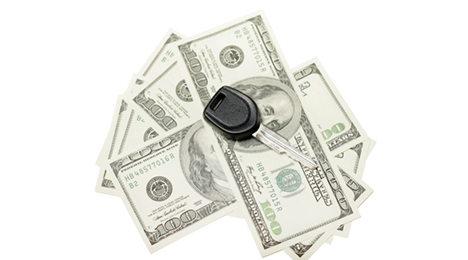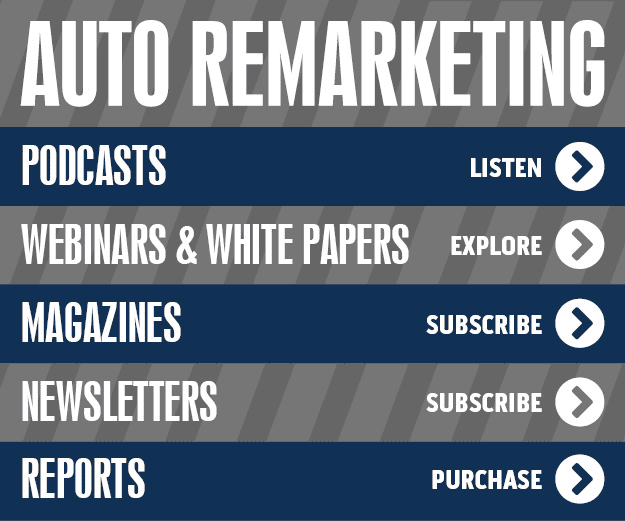Since the last Global Asset and Auto Finance Survey, the global economy looked to be entering a period of sustained growth and expansion — indicating good news for the auto and equipment finance industry. However, it has not all been plain sailing. Although it can be said the industry is on a firmer footing than for some years, there remain headwinds.
Take the world’s largest economy and largest asset finance market — the U.S. After a rocky start to 2014, owing to severe weather conditions, the economy picked up and with it hopes that leasing volumes would continue to surpass previous highs. Although the stock markets are still performing well, investment intentions have been muted by the ongoing gridlock between President Obama and the now Republican-controlled Congress.
Leasing industry data shows that, while the industry is performing well, the rate of growth has eased as the year has gone on.
Europe meanwhile is a bag of mixed messages. The economic recovery seems to be well underway in the U.K., and with it the equipment and auto finance markets are thriving. Elsewhere, research suggests that many European markets have turned the corner after the recession, only to be hit recently by further uncertainty — partly due to concern over sanctions against Russia which could rebound on EU markets, particularly Germany.
Nonetheless, the outlook in Europe for new business volumes in equipment leasing for the second half of 2014 have been mainly positive. And, despite the tremors in the developed Western European markets (the U.K. excluded), Eastern European countries, now emerging from many years of centralized control and with a burgeoning middle class, are proving to be one of the leasing industry’s high spots.
In many developed markets, government austerity, combined with regulatory changes and new regulatory requirements, is making life harder for bank-owned lessors which face cost and compliance challenges that put them at a competitive disadvantage relative to independent lessors.
But herein lies a bright spot. In the U.S., for example, data from the Equipment Leasing and Finance Association (ELFA) indicate that, after lagging for several years, independent lessors led the industry in new business volume growth rates. Captives have also performed relatively well.
Another bright spot in the U.S. is that auto leasing is at its most popular and it is expected that market conditions will support continued leasing popularity in the short term, although the momentum could start to slow next year. Similar positive indicators are present in the U.K. and other markets.
Much depends on China — how far and how hard will its economy slow — as demand from China directly affects many other national markets, not least in Asia Pacific. China’s leasing market is already big and has virtually unlimited potential. It’s hard to see its ballooning middle class relaxing demand for auto finance. And while the medium-term outlook for asset finance in India is subdued, there are healthy prospects for Asian markets such as Korea and Indonesia.
Another challenge, certainly for developed markets, is that potential lease accounting changes could have a significant effect from a reporting and process perspective for both lessors and lessees. This could cause significant expense, as well as business disruption.
On a final positive note, there are indications globally that financial institutions are working on innovative approaches to help businesses unlock capital tied up in plant and equipment for investment. Lenders are also looking at new ways to help companies whose customers increasingly want to pay for services and equipment based on their usage, rather than outright ownership.
Ed White is group chairman at White Clarke Group
Consumers are going to continue to ramp up their auto loan debt in 2015 while delinquencies are projected to tick higher, too.
That’s the two main segments of TransUnion’s annual auto loan forecast that calls for auto loan debt to rise to $18,244 at the end of 2015. That forecast would mark 19 consecutive quarters of increases since Q1 of 2011, when auto loan debt per borrower stood at $14,954.
The TransUnion forecast also calls for the national auto loan delinquency rate — the ratio of borrowers 60 or more days past due — to end this year at 1.20 percent, and increase slightly to 1.27 percent at the close of next year.
“We expect the auto loan market to continue to perform exceptionally well in 2015, with more sales leading to continued increases in auto loan debt per borrower as the national portfolio gets younger on average,” said Peter Turek, automotive vice president in TransUnion’s financial services business unit.
“We anticipate the economy to continue to improve next year, with a better employment picture helping the auto industry,” Turek continued. “While the auto loan delinquency rate has slowly risen to a point where it will be above 2010 levels, we are still far off the peaks observed in 2008 and 2009 when delinquencies were more than 30 basis points higher.”
Since 2007, TransUnion indicated the auto loan delinquency rate has been as low as 0.86 percent in Q2 of 2012 and as high as 1.59 percent in Q4 of 2008.
On average, analysts determined the delinquency rate during the fourth quarter between 2007 and 2013 was 1.29 percent.
While delinquency levels for subprime borrowers have grown from 4.2 percent in Q3 of 2012 to 4.5 percent in Q3 of 2013 to 5.3 percent in Q3 of this year, TransUnion pointed out the contribution of this segment to the overall delinquency rate has been muted because their share has remained between 14 percent and 15 percent during this timeframe.
Turek noted the subprime share of balances previously peaked in 2009 at just above 22 percent.
Looking further back, TransUnion’s data showed the number of subprime borrower accounts are 1.6 million fewer in the third quarter of this year than the same quarter seven years ago before the recession.
Meanwhile, Turek emphasized the number of auto loan accounts rose approximately 4 million in that same timeframe.
“The auto loan market has been especially strong for lenders, as much of the growth observed in the last few years has come from prime or better risk tiers,” Turek said.
“There is room for growth in the subprime sector as evidenced by more competition,” he continued. “Prior to the recession the percent of subprime auto balances were nearly 5 percent higher than they are now.”
On a state level, TransUnion said auto loan delinquency rates are expected to rise in 38 states with the largest increases occurring in Rhode Island (up 11 percent), Colorado (up 11 percent), Utah (up 9 percent) and Florida (up 7 percent).
The biggest percentage declines are expected in Alaska (down 5 percent), Wyoming (down 3 percent) and Maryland (down 2 percent).
TransUnion went on to mention auto loan debt is expected to rise in every state and the District of Columbia, with largest increases occurring in Michigan (up 8 percent), Missouri (up 7 percent), Georgia (up 6 percent) and Arizona (up 6 percent).
TransUnion’s forecasts are based on various economic assumptions, such as gross state product, consumer sentiment, unemployment rates and real estate values.
“The forecasts would change if there were unanticipated shocks to the economy, such as if home prices unexpectedly fall. Better-than-expected improvements in the economy, such as precipitous drops in unemployment, could also impact these forecasts,” TransUnion said.
Editor’s Note: Watch for the January/February print and digital editions of SubPrime Auto Finance News for more 2015 projections from TransUnion as well as other industry observers.
According to the latest Equifax National Consumer Credit Trends Report, the total number of outstanding auto loans year-to-date in November came in at more than 70.0 million, the highest level in more than five years.
That amount of paper in finance company portfolios as of November pushed outstanding balances 9.6 percent higher year-over-year to $965.0 billion.
Meanwhile, Equifax reported that auto loan serious delinquencies — defined as loans 60 days or more past due — stood at 1.04 percent in November as a share of balances, representing a decrease from 1.15 percent from the same time a year ago.
Analysts determined the total number of new auto loans originated between January and September climbed to 19.2 million, an increase of 4.7 percent versus the same period a year ago. During that same timespan, Equifax pointed out the total balance of new credit originated was $391.6 billion, an increase of 7.0 eprcent.
Looking beyond just auto financing, Equifax determined non-mortgage credit balances in November totaled $3.1 trillion, the highest level in more than five years.
Besides gains in the auto market, year-over-year balance increases included:
• Retail-issued credit cards: up 4.8 percent to $71.0 billion
• Bank-issued credit cards: up 4.7 percent to $611.7 billion
In addition, Equifax highlighted the total balance of non-mortgage write-offs year-to-date for November was $73.4 billion, the second-lowest level in eight years.
Similarly, the total balance of home-finance write-offs year-to-date in November was $91.2 billion, also the second-lowest level in eight years.
"The Great Deleveraging has clearly ended and U.S. consumers are back in the borrowing business, but how they borrow has greatly changed from prior to the Great Recession," said Amy Crews Cutts, senior vice president and chief economist at Equifax.
“Today, while auto loans make up 30.9 percent of non-mortgage consumer debt — just as they did in December 2007 at the recession’s start — student loans have grown from 20.2 percent to a whopping 37.3 percent and bank- and retailer-issued credit cards are down to 21.9 percent of consumer debt from 31.4 percent.”
Cutts continued, “One way to read this change is that consumers now value investment (in their education and durable goods like cars) over immediate consumption, which is good for our economy over the long run.
"But, with the exception of new-car production, sluggish consumption slows economic growth in the short-term, partially explaining the slower-than-hoped-for economic recovery,” she went on to say.
Extending the contract term length by 12 months meant consumers spent an extra $1.4 billion on new vehicles in November. That’s the calculation by Requisite Press, which also shared its November Auto Buyer’s Affordability Index (ABAI) this week.
Requisite Press reported an index reading of 53.0, indicating that a prudent, median-income household can only afford 53.0 percent of the new-vehicle average price.
In a survey of new-model buyers who utilized long-term financing, Requisite Press found that nearly half of the buyers used the longer terms to purchase more expensive vehicles. At November prices, buyers who financed with a six-year loan instead of five-year loan could spend an additional $6,016 while keeping payments the same.
Given the November sales volume, long-term loans enabled extra spending of more than $1.4 billion, according to the study.
Requisite Press fears that consumers with a lifetime of long-term loans could see a reduction in retirement savings of more than $140,000.
In a survey of buyers conducted last month using Google Consumer Surveys, Requisite Press found that nearly half (46.3 percent) of purchasers who had taken out a long-term loan (61 months or longer), would have selected a less expensive vehicle if limited to a 60-month loan.
Based on the November average transaction price of $30,445, Requisite Press president Phil Kelton calculated that buyers choosing a 6-year loan versus a 5-year loan were able to commit to an additional $6,016 in total cost while keeping payments the same.
Assuming current auto financing trends for loan term and the survey results, along with the November sales volume, the study determined that the total increase in spending due to long-term loans was more than $1.4 billion.
“The numbers are big when taken in aggregate, but the damage is done at a personal level,” Kelton said. “A lifetime of using long-term loans to boost spending, results in a lot less retirement savings — clearly a hit to family financial security.”
Based on a lifetime of buying eight cars with six-year loans (each with $6,016 of extra spending), a conservative 5 percent rate of return, and a retirement age of 67, Kelton computed the reduction in retirement savings would be more than $140,000.
He added that figure grows to more than $250,000 when seven-year auto loans are considered.
The November ABAI of 53.0 is based on a median household income of $53,713, a light-vehicle average transaction price of $30,445, and adherence to the auto financing rule consisting of a minimum 20 percent down payment, a maximum 4-year loan term and monthly payments of no more than 10 percent of gross household income. This equates to an affordable monthly payment of $318 and price of $16,143.
According to the third-quarter data from Experian Automotive, consumers aren’t necessarily adhering to that advice. Experian pegged the average new-vehicle loan term at 66 months with a monthly payment of $470 while tagging the average used-vehicle terms at $358 for 62 months.
Reynolds and Reynolds and RouteOne reached a new agreement on Monday to integrate RouteOne’s eContracting system with Reynolds’ docuPAD software, which can provide dealerships with the capability to capture electronic signatures for vehicle financing eContracts directly from docuPAD workstations and send them to RouteOne.
Previously, the companies explained F&I managers switched between applications and technology to sign RouteOne contracts and other related documents. This new functionality between docuPAD and RouteOne can eliminate a cumbersome process and allow F&I managers to execute contracts and other ancillary funding documents in one place, integrated with the entire vehicle sales process in docuPAD.
“Signing RouteOne eContracts along with vehicle funding package documents on a docuPAD screen allows for a smoother eContracting process in the dealership’s F&I office,” said Jon Strawsburg, vice president of product planning at Reynolds.
“The new integration streamlines the electronic signature process and helps ensure better accuracy and compliance tracking,” Strawsburg continued. “It also will provide a more consistent experience for consumers and a more transparent interaction, both of which can lead to better customer satisfaction.”
Reynolds’ docuPAD is an interactive, flat screen F&I selling tool that can engage consumers and enable F&I managers to work more productively. docuPAD can offer touch screen features that range from personalized menus and video presentations to e-signature capture for contracts and disclosure documents. docuPAD is part of the Reynolds Retail Management System for dealerships and is protected by a number of U.S. patents.
RouteOne is a provider of automobile financing system solutions for dealerships and finance sources. Its eContracting solution can speed the funding process, reduces errors through automated contract data validation and improves the overall consumer experience. It is an integral part of the RouteOne platform that also includes credit applications, online retail services, compliance tools and open integration.
“We’re pleased to extend our relationship with Reynolds by integrating the RouteOne eContracting system with docuPAD, which will enable dealers to electronically transmit funding package documents from docuPAD to RouteOne, eliminating the need to fax them,” RouteOne chief executive officer Mike Jurecki said.
“RouteOne’s goal has always been to provide a seamless, complete solution to accommodate the F&I process for dealers and lenders, and the new integration with docuPAD helps both RouteOne and our customers move closer to that goal,” Jurecki went on to say.
Much of the business at Matthews Motors in Clayton, N.C., is from customers in subprime credit tiers.
Fulfilling the needs of this segment is something of which store owner Steve Matthews understands the importance and opportunity.
“There will always be people with bad credit. We work extra hard to get them in a nice car at a fair price,” Matthews told sister publication Auto Remarketing during an interview in Raleigh, N.C., earlier this week. “They end up being very loyal customers.”
Perhaps that loyalty is helping to drive what appears to be a growing segment of the used-car business.
There was a 25-percent increase in used-vehicle sales to subprime customers during November, according to CNW Research.
There was an especially high number of sales to those with credit scores below 550; in fact, those jumped 27.5 percent, CNW said, and commanded a 22.25-percent share of used sales for the month.
Subprime growth may also be playing a role in the increasingly healthier new-car market, as well.
Kelley Blue Book senior analyst Alec Gutierrez was discussing the strength of the overall new-car sales environment during a sales day conference call on Tuesday, and mentioned several of the key drivers to this healthy new-car market and positive consumer outlook.
While also mentioning low unemployment rates, high consumer confidence, strong stock and real-estate markets, and lower gas prices as key factors, Gutierrez touched on the role of financing, including subprime.
He said “there’s still a very, very healthy atmosphere for the industry with interest rates still at historic lows — which really speaks to the quality of the finance environment, in which consumers have been able to leverage leasing, longer-term loans, low interest rates.
“And as lenders have opened up their credit standards and started to go back out to subprime borrowers, to some extent, we’re seeing more and more folks gain confidence and get back into the marketplace," Gutierrez went on to say.
Black Book vice president of data licensing Jared Kalfus described the industry “crossroads” finance company executives are assessing based on his first-hand conversations at last month’s Used Car Week in Las Vegas.
What has finance company leadership pondering which way to turn at this “crossroads?” Analysts from firms such as Black Book and TransUnion are finding that loan-to-value ratios are strong indicators for severity of loss. They say the lower a vehicle’s equity position, the lower the loan recovery rate and the higher the severity of loss.
“If we look back historically, lenders have used more traditional risk measurements, including credit score, time to maturity and the size of the loan. And when you observe these loans on paper just by looking at them, many look the same until the vehicle equity position is truly factored in and considered,” Kalfus told SubPrime Auto Finance News during a recent phone interview.
“When you start to consider the equity position that vehicle might have, that’s when you really start to underscore the fact that vehicle values are a critical component when evaluating these individual loans and portfolios,” he continued.
In analyzing more than 800,000 loans, a recent study with TransUnion showed that there is a strong correlation between LTV ratios and frequency of loss.
As an example, in looking at two loans that each had a balance of $7,500, a customer credit score of 720, and 24 months to maturity, one vehicle was valued at $12,500, and a second was valued at $4,500. The study showed that the latter loan will, in fact, default more frequently.
Black Book vice president of analytics Anil Goyal indicated the study results showed that finance companies that tracked LTVs closely enjoyed a “significant lift in predicative power by using equity in the whole process.
“That can give an edge to lenders. More accurate prediction of delinquency and default can help in better loss forecasting, better prioritization of collection activities and better forecasting of repayment rates,” Goyal continued.
Goyal added that watching LTVs is especially important as Black Book anticipates the decline of its vehicle value index after 36 months of record high levels.
“This is really important from a lending perspective because the vehicle value trends are all evolving,” Goyal said. “Early in the year in the spring, we saw the compact car segment for example was very strong, and now that segment is under pressure.
“On the other hand, now we’re seeing full-size SUVs and pickups are retaining their values here late in the year when usually we see a steeper depreciation,” he continued.
“The takeaway for the lenders is really to have a balanced portfolio and monitor the collateral values with accurate data and use that in their predicative models on a regular basis so they can have an edge,” Goyal went on to say.
That edge is part of why Kalfus mentioned that he saw the “crossroads” appear again during Used Car Week. Kalfus shared that he was having a conversation with a finance company executive who was quite familiar with the recent analysis by Black Book and TransUnion and recently implemented the LTV metric into its ongoing portfolio analysis. An executive from a different finance company overhead the discussion and joined in because he wanted to know more about to integrate LTV data into risk mitigation.
Kalfus acknowledged the finance company executive familiar with the data basically took over the pitch the Black Book VP typically makes, creating a “pleasant surprise.”
Kalfus continued, “The more data that finance companies use, the more predicative they will be, the more on top of their portfolios they will be. They can work to mitigate their risk.
“Our takeaway to reinforce the message in the conversation we’ve been having with lenders in the automotive finance community is that collateral values have a critical role in the overall underwriting, risk mitigation, and ultimately, long-term portfolio management,” he went on to say. “If they start to incorporate these traits and characteristics into their every-day portfolio management, then they’ll not only have more profitable portfolio, they’ll reduce their risk.”
And Goyal pointed out that finance companies can integrate LTV analysis into their portfolio management strategy in the same way they might watch credit scores.
“They’re all using similar techniques in terms of regression analysis to factor in whatever data they can get, whether it’s from the credit bureau or alternative data providers. Using equity in the whole mix can give you an edge,” Goyal said.
“When I talked to lenders, they are anticipating an uptick in delinquency, and that doesn’t scare them because the delinquency levels are pretty low,” he continued. “What they are concerned about is the vehicle valuations, where they’re going to be next year. What we’re seeing is there’s a lot more volatility across the different segments. They’re not all moving the same way. Some segments are dropping faster; some are not.
“That factor is what going to be important in assessing where your portfolio is moving,” Goyal went on to say. “Is your portfolio continuing to be balanced? Are you tracking your portfolio to determine where your risks are and using that data to prioritize where you want to work?”
Perhaps that’s why Kalfus indicated the industry is at a “crossroads.”
Kalfus closed his comments to SubPrime Auto Finance News by emphasizing, “Lenders are really more engaged.”
Perhaps Experian Automotive found another part of what is the “new normal” in auto financing as analysts determined that the average dollar amount for both new- and used-vehicle loans reached all-time highs in the third quarter.
According to the latest State of the Automotive Finance Market report, the average loan amount for a new vehicle was $27,799 in Q3, up $1,080 from the previous year. Used-vehicle loans increased $676, reaching $18,576 over the same time period.
With the continued growth in loan amounts, the quarterly findings also showed consumers leasing at a higher rate, as well as taking out longer loans.
The report indicated leasing accounted for 29.1 percent of all new-vehicle financing in Q3, up 7.1 percent from a year ago. New-vehicle loans in the 73- to 84-month range grew by 23.7 percent in Q3 compared with the previous year, while used loans in the same range grew by 18 percent from a year ago.
“Car buyers tend to shop with a monthly payment in mind. As a result, we are continuing to see them turn to leasing and longer loan lengths as strategies to keep payments down and make vehicles more affordable,” said Melinda Zabritski, senior director of automotive finance for Experian.
“As car values continue to reach new heights, these insights will help dealers, lenders and consumers become more aware of the options available to them to keep people buying cars, all while staying within their budgets,” Zabritski continued.
Furthermore, the report found that the average monthly payment for new and used-vehicle loans increased from the previous year. The monthly payment for a new-model loan reached $470, up $12 from a year ago, while the monthly payment for a used-vehicle loan reached an all-time high of $358, an increase of $8 over the same time period.
Additional findings from the report showed that interest rates for new-vehicle loans increased slightly in the third quarter, climbing 4.7 percent from a year ago. However, despite the growth, these rates have decreased each quarter in 2014. Interest rates for used-vehicle loans decreased to 8.5 percent in the quarter.
“As consumers explore the different options available to them to keep their monthly payments low, they have to remember interest rates often can play a factor. Making timely payments and becoming a low credit risk are the easiest ways to ensure a low interest rate,” Zabritski said.
“For example, the average interest rate for super-prime consumers on a new loan was 2.6 percent, compared with 12.7 percent for deep subprime consumers. Understanding how on-time payments influence credit scores, can help consumers improve their financing experience,” she went on to say.
Experian also highlighted five other notable trends, including:
—The average credit score for a new-vehicle loan was 713 in Q3, down 3 points from a year ago.
—The average credit score for a used-vehicle loan rose 2 points in Q3, reaching 650.
—Captives were the only lender type to see an increase in market share year over year, up 28.9 percent.
—A record-high 54.1 percent of all used vehicle transactions were financed, up from 52.6 percent in Q3.
—For new vehicles, 84.8 of all transactions were financed in Q3 2014, which was unchanged from the previous year.
WeGoLook and Innovative Funding Services (IFS) recently launched their new partnership designed to assist buyers with auto financing and warranties through WeGoLook’s partner services — which can equip consumers with resources for completing their entire vehicle purchase online.
The companies explained individuals can shop on their favorite websites such as eBay Motors, AutoTrader.com and Cars.com. Then they can order an onsite inspection with WeGoLook for the vehicle they are interested in buying to verify the current condition, which will allow them to make a purchasing decision.
Simultaneously, individuals can apply for auto loans, purchase warranties and arrange vehicle transport with IFS.
After the buyer has ordered a WeGoLook Report verifying the condition of a prospective vehicle and made the decision to purchase, they can complete their entire transaction online. IFS provides financing services, tire and wheel protection, vehicle service protection, GAP coverage and vehicle transport.
“The online dealership marketplace is providing buying power for the online consumers,” officials said.
“The auto industry is changing and WeGoLook partnering with IFS is providing car shoppers the opportunity to complete safe transactions with our ever changing mobile economy,” they went on to say.
Loan origination software company defi SOLUTIONS announced this week the appointment of a new vice president of sales.
Brice Beard brings over 15 years of auto finance experience with him to take on the responsibilities of the new position, one of which will be to help the launch of ESSENTIAL, the company’s new pre-configured LOS service designed for small lenders.
“Brice’s knowledge and experience in lending coupled with his extensive sales and bureau experience will bring tremendous value to our customers,” Stephanie Alsbrooks, defi SOLUTIONS’ chief executive officer and founder, said. “He has a strong understanding of how data and technology can be best leveraged to serve our lenders.”
Beard moves into the position after most recently working with automotive national accounts and sales with TransUnion. He also spent time in sales and business development at World Omni and CitiFinancial Auto. Beard was also previously the assistant vice president of direct lending operations at both AmeriCredit Financial Services and Texas Bank.












